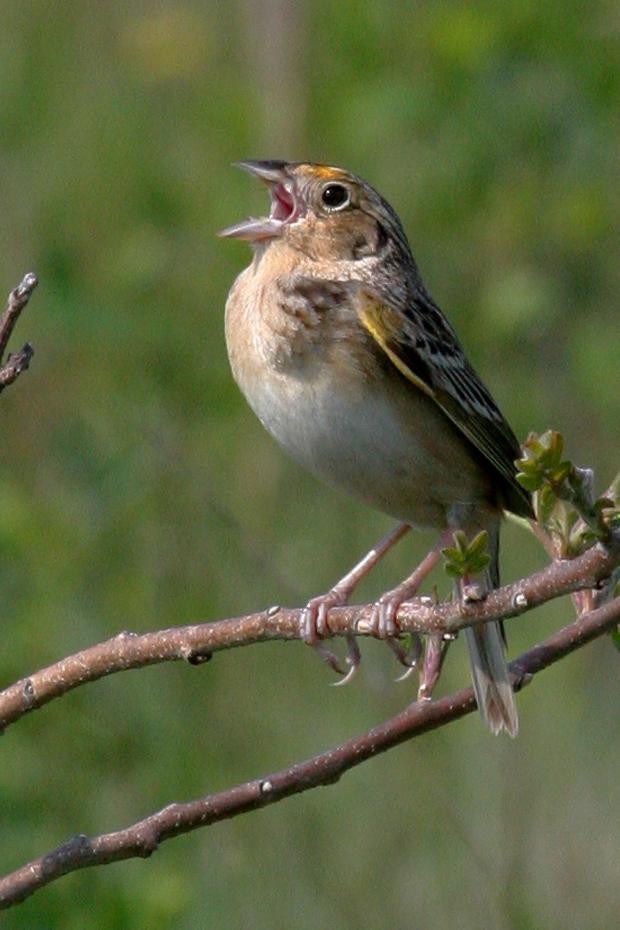Overview
The population of grasslands birds is declining at a faster rate than any other group of birds in Massachusetts and in North America. Of the eight grassland birds that breed in Massachusetts, five are protected under MESA. Two of these, Henslow's Sparrow and Short-eared Owl, never bred in large numbers in Massachusetts and have been extirpated. The other three species remain viable, but are vulnerable.
Habitat
Grassland birds are highly specialized in their habitat needs. For example, the Grasshopper Sparrow and Upland Sandpiper live in large, dry areas of native bunch grasses formed on glacial outwash and maintained for thousands of years by fire. This plant community is now considered extremely rare. These areas are known as sandplain grasslands, and many have been lost to development. Others have been lost to seral succession due to modern fire suppression practices. Many of the remaining sandplain grasslands in Massachusetts occur on airports. Therefore, the majority of our Grasshopper Sparrows and Upland Sandpipers are found at airports.
In Massachusetts, grassland bird species are protected through regulations and habitat management. The NHESP works with many cooperators to achieve effective conservation. Cooperators include local and state governments, private entities, and non-profit organizations. One way the NHESP manages sandplain grassland habitat is by reintroducing fire on DFW land.
Conservation Plans
Developing conservation plans is a key strategy for protecting populations of grassland birds. One such plan was finalized and approved in 2013 by the Fisheries & Wildlife Board. This plan was developed by DFW and NHESP in collaboration with the Trustees of Reservations, The Nature Conservancy, and the Massachusetts Audubon Society. The report focuses on the Upland Sandpiper and the Grasshopper Sparrow, but also includes the Vesper Sparrow. The report presents a state-wide action plan which identifies specific targeted conservation goals.
Additional Resources
Contact
Online
Phone
Open M–F, 8 a.m.–4 p.m. (closed noon–12:30 for lunch)
North/Central/Western Massachusetts
Southeastern Massachusetts/Cape & Islands
